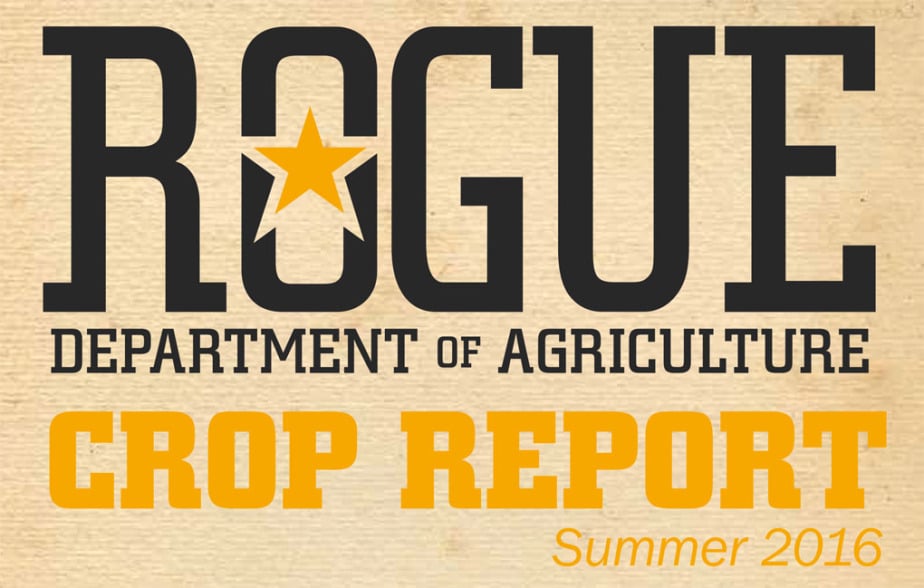 You say you want a revolution
You say you want a revolution
Come to Rogue Farms this summer, and the Revolution will be to your right. On the south side of Wigrich Road are some of the biggest changes in the history of the farm. Let’s start with our two acres of Prickless Marionberries. Planted last spring, they’re bursting with berries we’ll pick for the first time this year. We added an acre of cucumbers. This crop started in the Revolution Garden and did so well we moved it into the fields this spring.
If that doesn’t impress you, how about a new hopyard? Between the cucumbers and the marionberries, we’re planting two new varieties of hops on 10 acres. You say you see an empty field? Just wait, it will soon be overflowing with newly planted hops.
Looking for our Dream Rye? We moved it across the Cascades to our farm in Tygh Valley where we planted 20 acres in April. We also doubled our acreage of Risk malting barley. At Rogue Farms we’re a restless bunch, always looking for ways to improve the proprietary palate of flavors we grow for Rogue Ales, Spirits, Ciders and Sodas.
The Grow Your Own Revolution never stops.
The new hops of Rogue Farms
After eight years and eight varieties of hops, it was time for something new. For 2016, we made more changes than usual to what we grow. But it didn’t feel like enough. Plus there was this 10-acre empty spot in the field. What would we plant there? More corn? More rye?
Our answer was hops. And not just any hops, it had to be hops we’ve never used before in a Rogue beer. The first of our two new varieties is the Adair hop. Strong on alpha acids, some might be tempted to label this a bittering variety. But we also like Adair for its lemon, herbal and dill aromas. We’ll plant fives acres of Adair this summer. Our other new variety is Keven. This hop is low in acids with more complex aromas ranging from lemon to cedar, pine, floral, pepper and green melon. We’ll plant five acres of Keven, too.
Together, Adair and Keven make up one of the biggest transformations of the proprietary palate of flavors we grow for Rogue Ales. Add them to our current eight varieties and Brewmaster John Maier has an infinite number of new recipes to experiment with and new styles of beer to craft. He’s got two years to think about it, and we don’t mind waiting. Whatever John decides to create, we know it will be world-class and unlike anything we’ve tasted before. They don’t call him “More Hops” for nothing.
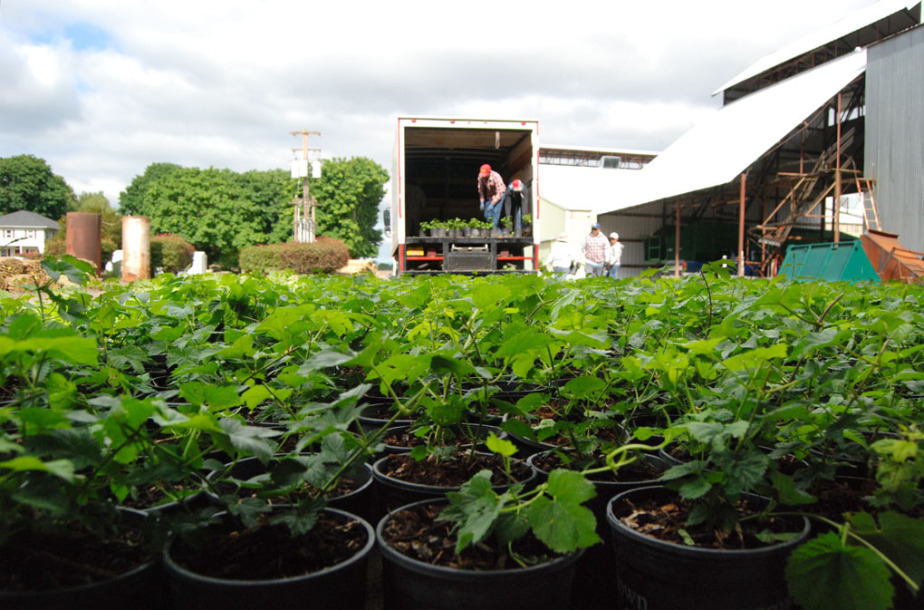
Hops are unlike anything else we grow. You can’t drill seeds and if things don’t turn out, plant something different the following year. Building a hopyard begins months before a single hop plant goes into the soil. The crop starts in a greenhouse as cuttings in small pots filled with bark dust. As they grow, we’ll move them into larger and larger pots, while gradually exposing them to the outdoors. This makes the transition from greenhouse to hopyard as smooth as possible.
Then there’s the matter of a trellis. Just one acre of hops requires 45 poles, 21 feet long, buried 3 feet deep and connected with miles of wire. Multiply that 10 times for our new hopyard at Rogue Farms. Before you know it, you’ve spent tens of thousands of dollars and hundreds of hours.
Hops also need at least two growing seasons before they produce a harvestable crop. You don’t really know how things are going to turn out until it’s too late to turn back. Growing hops is about making smart choices, taking risks and staying dedicated.
What’s an Advair and who’s Keven?
The Adair hop we named for Camp Adair, a former Army Base in Polk County, the home of Rogue Farms in Independence. During WWII, soldiers from Camp Adair worked as hop pickers during harvest to help bring in the crop during a period of severe labor shortages. Thanks to them, thousands of acres of hops did not go to waste. Americans made many sacrifices during the war, but giving up beer was not one of them.
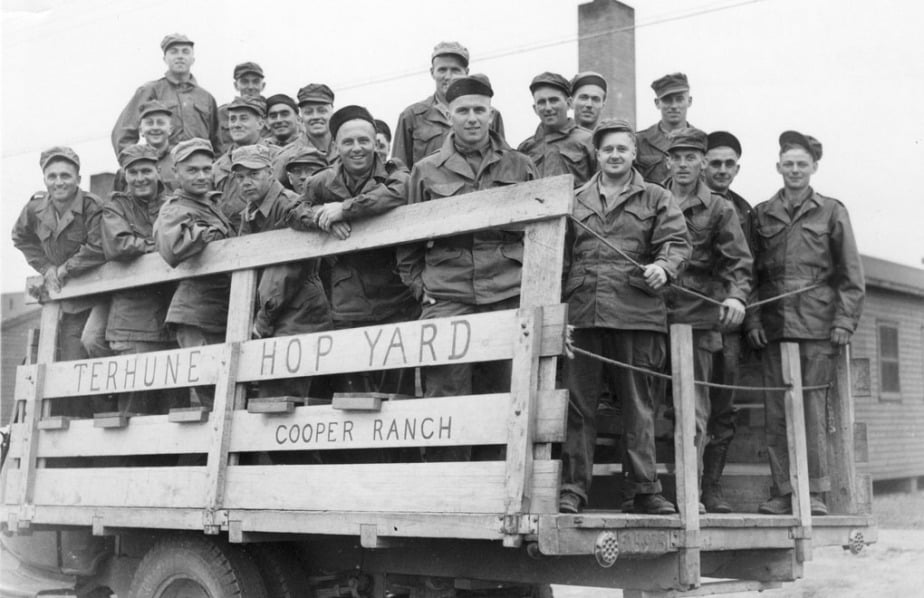
Our second new hop variety is named for Keven Christensen, the hopyard manager at Rogue Farms. Keven came to Oregon in 1977 on a visit and decided to stay. He’s been farming hops in the Willamette Valley ever since. Keven says hops are unique and grow unlike any other plant. But the best thing about hops he says, “is that you can make beer out of them.”
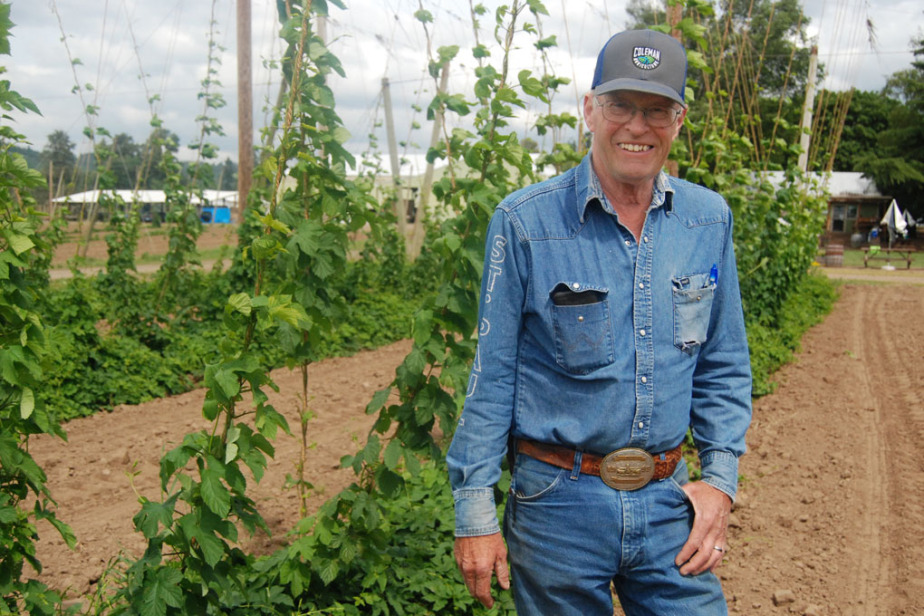
Spring at Rogue Farms
The third warmest February on record brought an early spring to Rogue Farms. Our hop bines emerged the last week of the month, two weeks sooner than anyone expected. The danger with an early spring is that Mother Nature can quickly change her mind. A warm day followed by a chilling frost can damage or kill young plants. Thankfully that never happened. The warm trend continued into March and April.
The unseasonably warm weather meant we had to get to our chores sooner, and get them done faster.
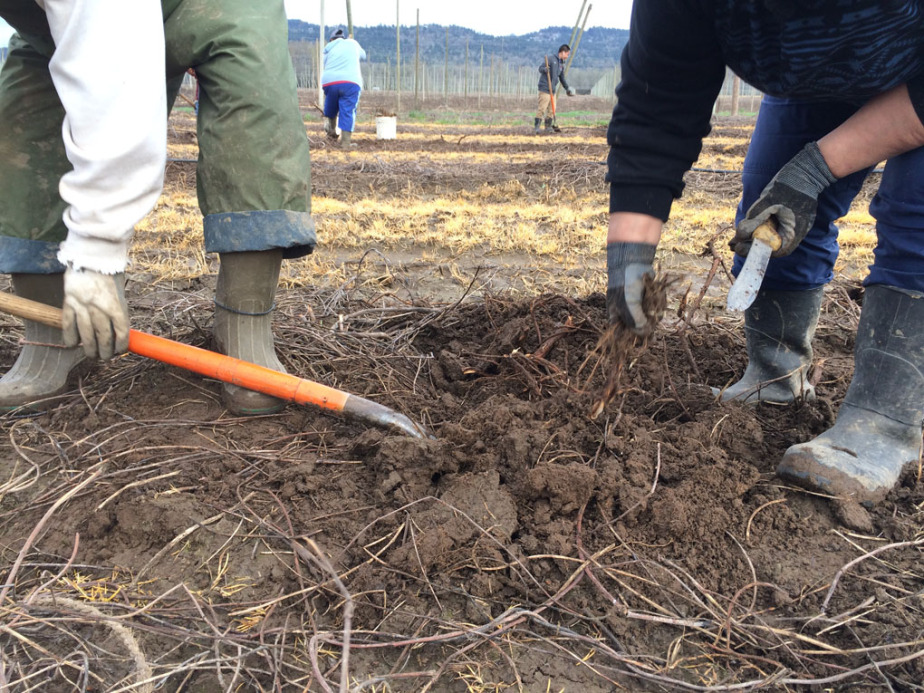
March found us in the hopyard, digging up and splitting rhizomes. This is the hop grower’s version of spring cleaning. Old and dying bines are removed, then replaced with healthy rhizomes we split from other parts of the hopyard. This is how we keep a hopyard productive for a century while growing plants that live 10-15 years.
By the end of the month we were stringing and staking the trellis, one of the biggest chores of the year. The job involves dozens of farmhands and several days of hard work. To string and stake our 42 acres of hops requires 253 miles of string, cut into 63,637 sections. One end is tied to the trellis wires by workers riding high through the hopyard, while the other end is pushed deep into the soil by another crew with long poles and stakes.
That’s 63,637 knots and 63,637 stakes, all of the work done by hand. But without it, we wouldn’t have a trellis and we wouldn’t have hops for our beer.
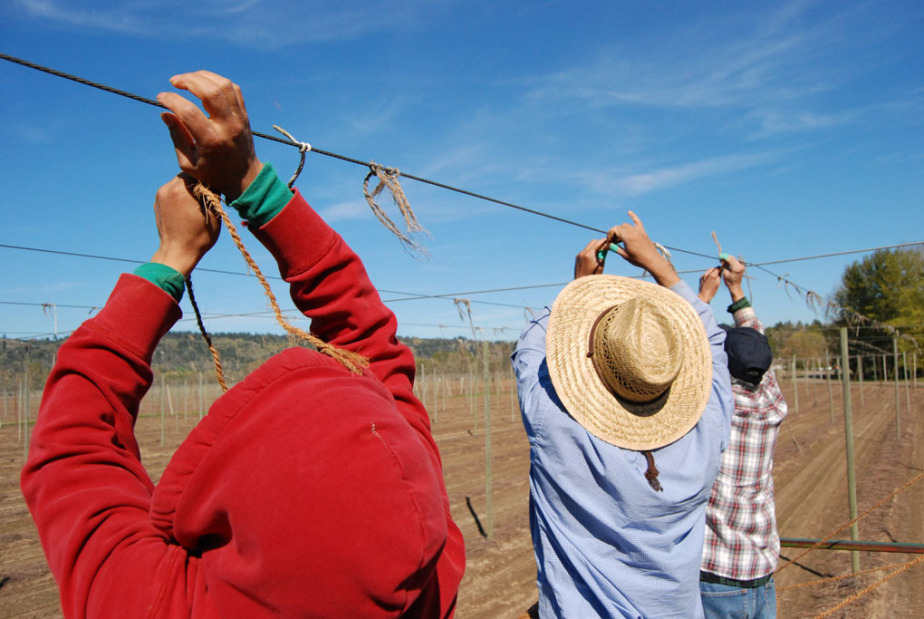
We had big plans for the Revolution Garden this spring and decided it was time to get serious about who we wanted to tend it. Our search led us to Stacia, a certified Master Gardener. Stacia grew up on a family farm, where food came from the garden, not a grocery store. As a little girl, she loved playing in the dirt, helping raise the vegetables that would end up on the dinner table. Growing and gardening runs deep in her family tree.
Like everyone else on the farm, Stacia got an early start in the garden thanks to the warm spring. Among her first chores was cleaning up the grounds, fixing the raised beds, and pulling 33,257 weeds in just the first week. In March, she added new beds to our existing plantings of angelica, orris root, woodruff and coriander. Also on her to-do list for spring is planting sassafras, dwarf spruce and more juniper bushes.
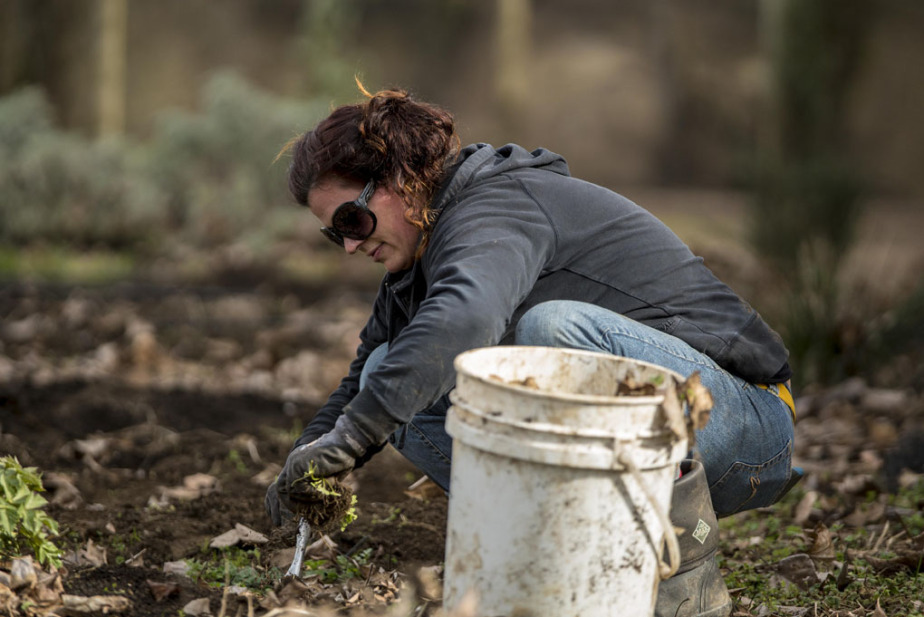
The Revolution Garden is where we grow ingredients for our gins, sodas and ciders. But it’s also where we experiment with new crops and see how they do in the terroir of Rogue Farms. One of those experiments is our first batch of strawberries. We planted four varieties to find out which one would make the best tasting cider. Another of our experiments is making woodruff syrup for a Berliner Weisse. For our first harvest of the year, Brewer Danny Connors dropped by the garden to gather his own woodruff leaves, then cooked a test batch of syrup at home. Brewing doesn’t get any more hands-on than that.

Honey, we’re home!
Returning from their winter vacation in California, the Rogue Farms honeybees arrived just in time for one of the greatest shows on earth. The orchard was in full bloom, a glorious display of white and pink flowers on the apple, pear and plum trees. By the Revolution Garden, the flowering borage was bursting in beautiful purple petals.
With all this nectar waiting for them, we knew our honeybees would not go hungry. The season was off to an excellent start.
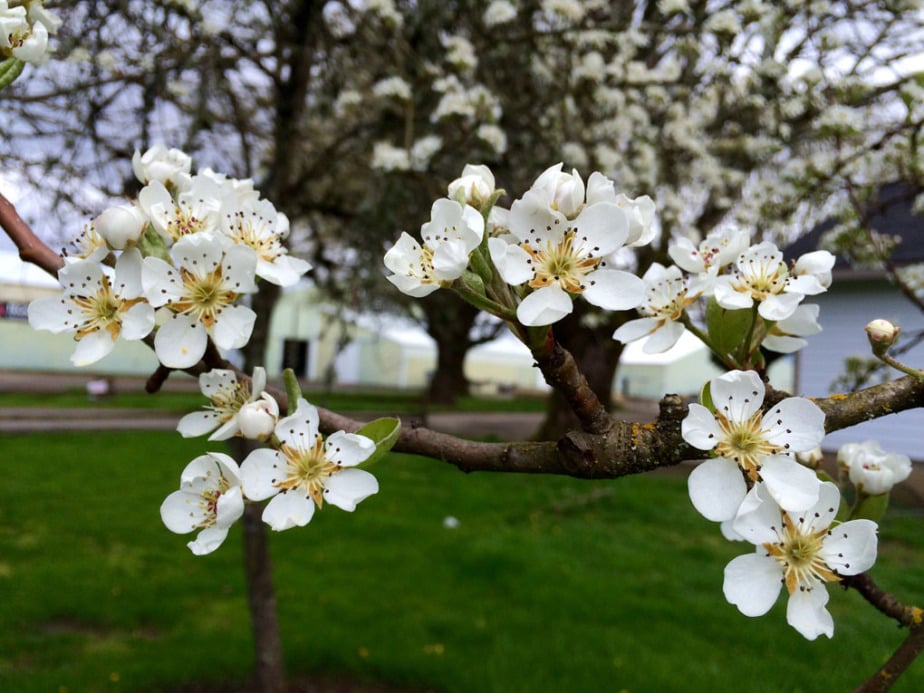
Our big chore this time of year is prepping the colonies for the spring nectar flow. Honeybees are highly tuned in to the warming temperatures. The queen increases egg laying and the population of the colony starts to grow.
It’s a numbers game. The bees need thousands of new foragers and workers to gather the spring nectar, process it into honey, and put away the surplus for safekeeping. Our role is to give the honeybees their space. We add supers on top of the hives — extra boxes where they store the leftover honey. It’s like adding an attic to your house.
The supers also prevent swarming. When a hive is too cramped, about half of the bees will fly off in search of a new place to live. If we’re lucky, we’ll catch the swarm and put it back in one of our empty hives. If we’re unlucky, the swarm disappears, never to be seen again. Most important, when we harvest this summer, we take only the surplus honey from the supers. The rest belongs to the bees.
As much as we love brewing our Honey Kolsch and Marionberry Braggot with their honey, it’s more important that the bees have enough for next winter. They eat first.
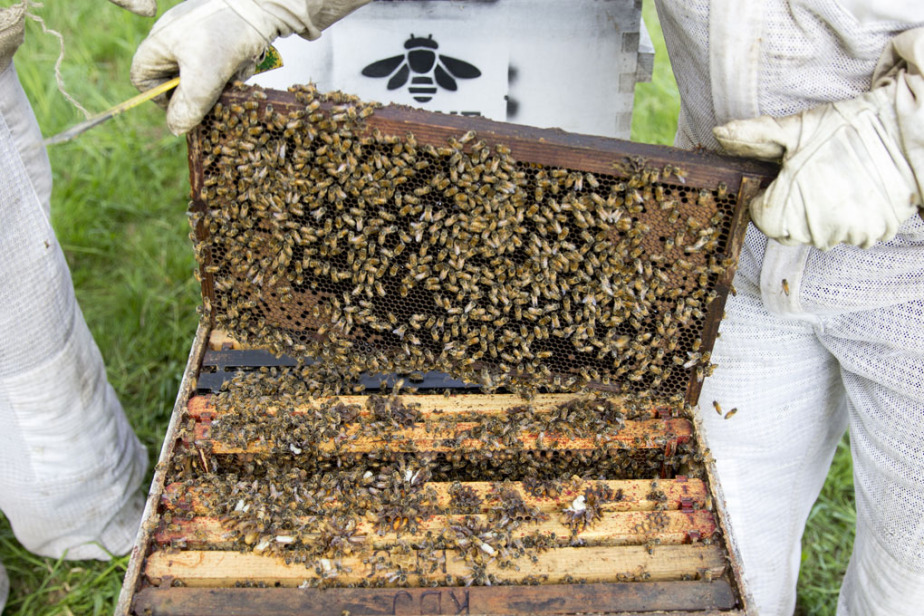
To view the entire Rogue Crop report, click right here. This information was all provided from the fine folks at Rogue Ales & Spirits and the Rogue Department of Agriculture. Big ole thanks to Rogue Farms for letting us reproduce this.


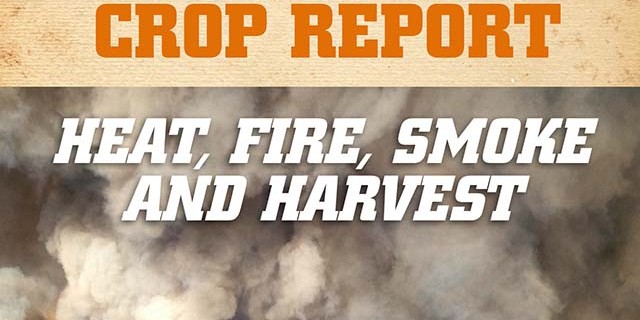
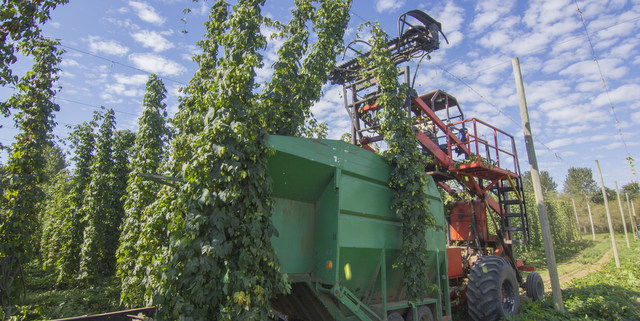
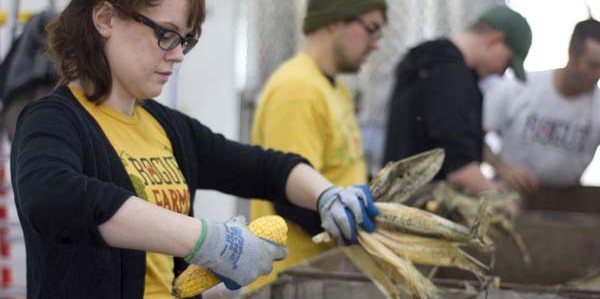
Nate Underwood liked this on Facebook.
#CraftBeer #CraftBrewing #Beer #BeerBiz Magnificent images: The summer 2016 Rogue Farms Crop Report https://t.co/ESoV33114m
Magnificent images: The summer 2016 Rogue Farms Crop Report https://t.co/eafo7lpXms via @craftbrewingbiz
RT @CraftBrewingBiz: Magnificent images: The summer 2016 Rogue Farms Crop Report. @RogueAles @RogueFarms #MustSee https://t.co/wbcA7NMjyA